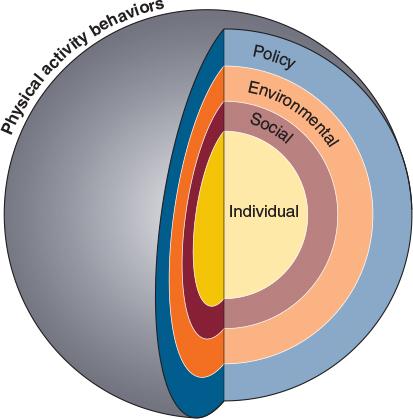Development of health guidelines
This is an excerpt from Foundations of Physical Activity and Public Health 2nd Edition With Web Resource by Harold Kohl III,Tinker Murray & Deborah Salvo.
The development of health guidelines is a third critical function of public health science. Public health guidelines are official policy statements, usually developed by a government body, agency, or other reputable organization, that are based on the best available science. Public health guidelines provide clear recommendations about a course of action to deal with a pressing public health issue. Recommendations for childhood immunization schedules (when and which vaccines and their timing), diabetes treatment (the frequency and method of glucose self-monitoring), nutrient intake (micronutrient daily recommended intakes for health), and annual influenza vaccinations (type and timing) are all examples of public health guidelines that, based on the best available science, give health professionals and the public clear guidance about the most appropriate courses of action for preventing and treating certain health problems.
In 2008, the U.S. Department of Health and Human Services published the first Physical Activity Guidelines for Americans (USDHHS 2008; see the highlight box2018 Physical Activity Guidelines for Americans). These guidelines, updated in 2018, are based on comprehensive scientific summaries to detail the best science-based recommendation for the weekly amount of physical activity necessary to prevent disease and promote positive health outcomes (USDHHS 2018). The physical activity guidelines were developed for children and adolescents, adults, and older adults. These guidelines should be used as targets for physical activity participation.
Several other countries, as well as the World Health Organization, have published guidelines similar to the Physical Activity Guidelines for Americans. Japan, Canada, Australia, and England have all taken leadership roles in establishing physical activity as a public health priority by setting physical activity guidelines and recommendations.
Promoting Physical Activity for Health
As the field of physical activity and public health has emerged, it has become clear that many factors at many levels influence physical activity behaviors. Many investigators have used the social ecological model as a guiding framework to explain these multiple levels. They are illustrated in figure 3.6 and form the basis for the third section of this textbook.

Figure 3.6 Multiple levels of influence on physical activity behaviors: The social ecological model.
At the center of the target in the social ecological model for physical activity behaviors are individual factors. These are the factors that are innate to each person and that differ among people. A person's genetic makeup, early life experiences (e.g., youth sport participation), self-efficacy, and other factors, such as sex, disability, growth and development, and socioeconomic status, may all be important determinants of health behaviors such as physical activity.
Moving out from the center, social influences on physical activity are important. Research has now shown that individual factors are not enough to explain physical activity behavior. Determinants at the social influences level aren't characteristics of the person per se, but are, rather, characteristics of how the person interacts with society or culture. Influences at this level can include peers, medical care organizations (doctors), family members, and organizations (schools, places of worship, worksites).
The third level in the social ecological model represents environmental influences. These influences may enhance or restrict physical activity behaviors, and are external to the person but common across societies and cultures. Research on the effects of physical environment on physical activity participation has exploded as the field of physical activity and public health has emerged. The ability to influence the physical activity of vast numbers of people (instead of one person at a time) by making a single change makes environmental influences on physical activity a particularly interesting area of research. The availability of places to be active, such as trails, sidewalks, fitness facilities, bicycle lanes, community and neighborhood design elements are examples of how the built environment can influence physical activity.
Finally, the outer level represents policy influences on physical activity. Influences in this sphere include written or unwritten rules, codes, and norms that influence environmental or social determinants of physical activity. As with the physical environment, determinants at this level are particularly attractive because of their potential to influence many people. Examples of policy influences on physical activity include policies allowing increased access to places to be physically active (making it easier to be physically active), educational policies (e.g., mandating high-quality daily physical education for schoolchildren), and transportation-related policies (e.g., making it easier to walk or bicycle for transportation).
By combining knowledge, skills, and abilities related to the basic exercise sciences and public health, you can better explain and discuss professionally the health benefits and risks of exercise and physical activity to your peers, colleagues, and the communities you serve (see part II, chapters 5 through 10). An understanding of the specific challenges that affect physical activity and exercise in professional exercise science jobs can clarify how the exercise sciences affect public health, and vice versa. The highlight box Careers Combining Exercise Science and Public Health lists careers in exercise physiology, biomechanics, and sport and exercise psychology that are commonly seen in the professional areas of health and fitness, preventive medicine, athletic performance, and rehabilitation.


Get the latest insights with regular newsletters, plus periodic product information and special insider offers.
JOIN NOW


